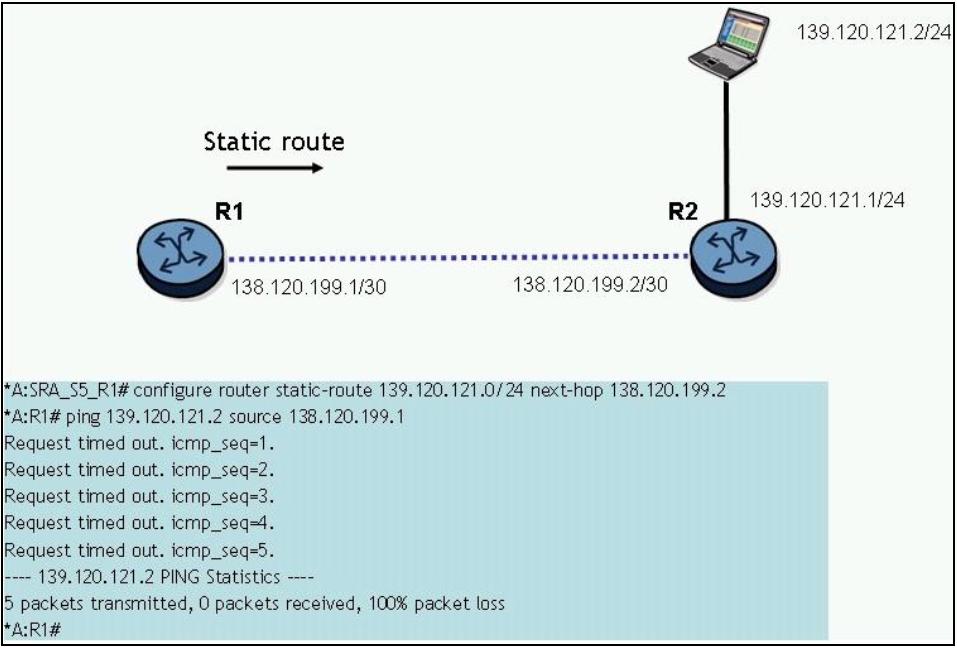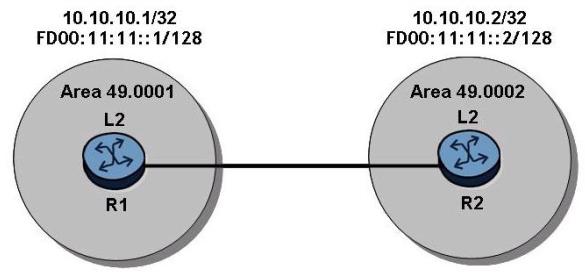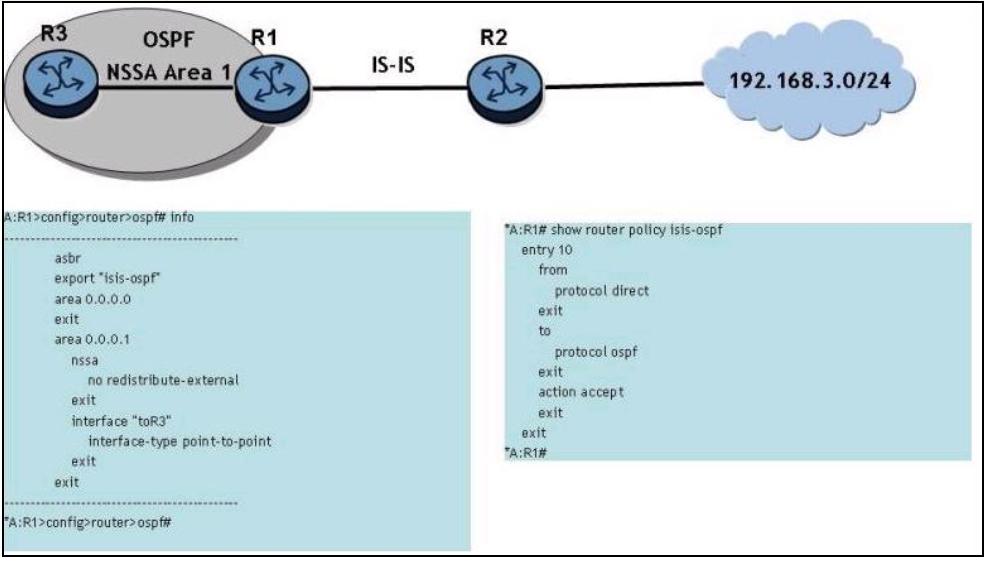Nokia 4A0-101 - Alcatel-Lucent Interior Routing Protocols and High Availability
Click the exhibit button.

A static route has been configured on router R1 to reach the PC at 139.120.121.2. However, as shown in the exhibit, the ping fails. What is the most likely cause of the problem?
Which of the statements below best describes the operation of the IPv6 anycast address?
Refer to the exhibit below. The routers have an established IS-IS L2 adjacency on which IPv4 system addresses are exchanged. An operator successfully configures multi-topology IS-IS routing so that the IPv6 system addresses are also exchanged between routers. Which of the following statements best describes the number of IS-IS adjacencies and the number of LSPs in the LSDB of R1 AFTER IPv6 has been configured?

Click the exhibit button

The 192 168 3.0/24 network is learned on router R1 via IS-IS Given the OSPF configuration shown, and assuming that the OSPF adjacency between routers R1 and R3 is up, why is the 192 168.3.0/24 route not in router R3's route table? (Choose two)
What is another term to describe the default route for a client?
Which of the following OSPFv3 LSAs have an AS scope?
A router sets the E bit in the flags of its Type 1 LSA. What does this indicate?
Which of the following are types of routers in an IS-IS topology? Choose three answers
A router receives an OSPF database description packet from a neighbor that references an LSA, which is already in the router's LSDB. The sequence number in the DBD packet is lower than the sequence number of the LSA in the LSDB.
What action does the router take?
Which of the following is a type of authentication that is supported by OSPF on the Alcatel-Lucent 7750 SR?



